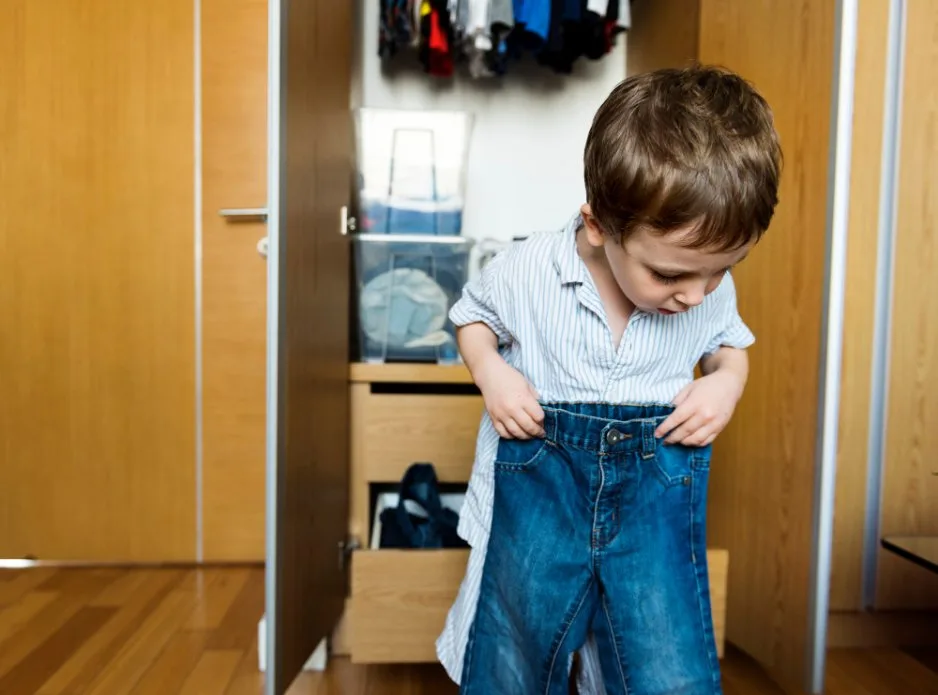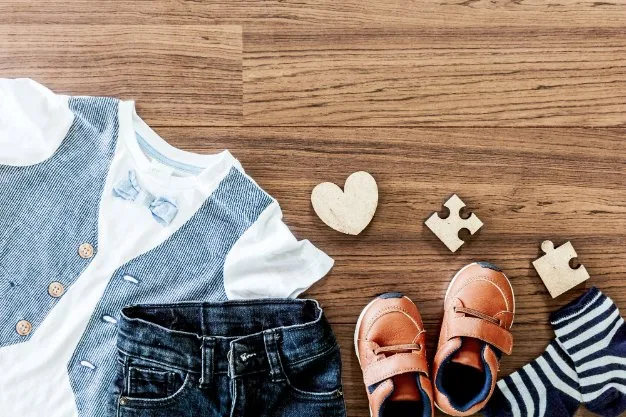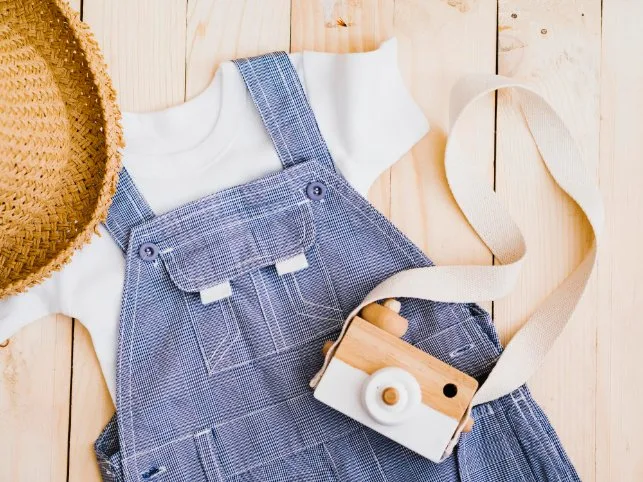A Complete Evidence-Based Guide for Parents on Fostering Independence Through Clothing Choices
Table of Contents
- Why This Decision Matters More Than You Think
- Age-Specific Guidelines and Developmental Milestones
- Developmental Benefits of Clothing Choices
- Special Needs and Sensory Processing Considerations
- Practical Implementation Strategies
- Common Challenges and Evidence-Based Solutions
- Expert Recommendations and Latest Research
- Long-Term Impact on Parent-Child Relationships
- Frequently Asked Questions
- Conclusion
Why This Decision Matters More Than You Think

Every morning presents a choice that goes far beyond simply selecting what toddlers wear. When parents allow their children to pick out their own clothes, they’re actually providing opportunities for growth, independence, and confidence building that will impact their child’s development for years to come.
Research consistently shows that giving children autonomy in age-appropriate decisions creates stronger, more confident individuals. Clothing choices represent one of the earliest and most accessible ways for toddlers to exercise control over their environment while learning valuable life skills.
Key Research Finding: Studies indicate that children who participate in daily decision-making, including clothing choices, develop stronger problem-solving abilities and higher self-esteem compared to children who don’t have these opportunities.
However, this approach isn’t simply about letting children wear whatever they want. It requires understanding developmental stages, individual needs, and practical considerations to create a framework that supports both independence and appropriate boundaries.
The question isn’t whether to let your toddler choose their clothes, but rather how to implement this approach in a way that benefits your child’s development while maintaining necessary practical and safety considerations.
@jayandfouroriginal Letting my toddler choose his own clothes: A fun moment
♬ original sound – Jay and Four
Age-Specific Guidelines and Developmental Milestones

At What Age Should a Child Pick Out Their Own Clothes?
Understanding when children are developmentally ready for clothing choices helps parents set appropriate expectations and provide the right level of support. The timeline varies significantly between children, but general patterns emerge from developmental research.
“The American Academy of Pediatrics states that choosing their own clothing for the day is a way for preschoolers to assert their independence and put those skills into practice.”
— American Academy of Pediatrics via The Soccer Mom Blog| Age Range | Developmental Readiness | Appropriate Choice Level | Expected Dressing Skills | What Parents Can Do |
|---|---|---|---|---|
| 12-18 months | Cooperates with dressing, holds out arms and legs | No independent choices yet | Removes socks and shoes, pushes arms through sleeves | Focus on cooperation and basic body awareness |
| 18-24 months | Shows strong preferences, may resist certain items | Very limited choices between 2 items | Removes loose clothing, puts on hat, unzips large zippers | Offer simple either/or choices with pre-selected options |
| 2-3 years | Expresses clear preferences, seeks control and independence | Simple choices from weather-appropriate options | Puts on loose shirts and pants, removes most clothing independently | Introduce weather concepts, allow some trial and error |
| 3-4 years | Can handle multiple options, understands basic weather concepts | Limited selection from organized, appropriate choices | Dresses independently in simple clothes, manages large buttons and snaps | Organize accessible clothing, teach matching and appropriateness |
| 4-5 years | School readiness, improved fine motor skills and planning | Significant autonomy with gentle guidance as needed | Manages most fasteners except small buttons and shoelaces | Support full independence while maintaining safety boundaries |
| 5+ years | Complete independence expected for basic dressing | Full choice within appropriateness and safety boundaries | Ties shoes, manages all clothing independently, plans ahead | Focus on style development, special occasion dressing, and care of clothing |
Should a 3-Year-Old Be Able to Dress Themselves?
By age 3, most children should be able to handle basic dressing tasks independently. Research from occupational therapy studies shows that 3-year-olds typically can:
- Put on loose-fitting shirts and pull-on pants
- Remove most clothing items independently
- Put on shoes (though not necessarily on correct feet)
- Make simple clothing choices between two options
- Understand basic weather-clothing connections
However, they may still need help with complex fasteners, clothing orientation, and understanding appropriateness for different situations.
At What Age Do Kids Start Picking Out Their Own Clothes?
Most children begin showing clothing preferences around 18-24 months, but systematic choice-making typically emerges between ages 2-3. The progression follows this general pattern:
- 18-24 months: Express preferences through rejection of certain items
- 2-2.5 years: Make simple either/or choices when presented with options
- 2.5-3 years: Begin to seek out preferred items independently
- 3-4 years: Make more complex choices considering multiple factors
- 4+ years: Plan outfits and consider appropriateness for activities
What Age Do Kids Put Socks On?
Sock-wearing typically develops around age 3-4, though this requires significant fine motor development and coordination. Many children can pull socks on by age 3 but may struggle with proper heel placement until age 4-5. For children with sensory sensitivities, sock tolerance may develop differently and require special consideration.
Developmental Benefits of Clothing Choices

Why Letting Your Toddler Choose Their Own Clothes Matters
Allowing toddlers to pick their clothes goes far beyond the simple act of getting dressed. This daily routine becomes a powerful tool for supporting multiple areas of development simultaneously.
Encouraging Independence and Building Confidence
When children choose their own durable, appropriate clothing, they develop a sense of agency and control over their environment. This autonomy builds confidence that extends into other areas of life.
Research Insight: A study published in the Journal of Applied Psychology found that children dressed in bright, colorful clothes they chose themselves displayed increased confidence and enthusiasm in group activities compared to children in parent-selected clothing.
Each successful clothing choice reinforces a child’s belief in their ability to make good decisions. Even when choices seem unusual to adults, the act of choosing builds self-esteem and personal confidence.
Supporting Fine and Gross Motor Skills Development
The process of selecting and putting on clothes provides extensive practice for developing motor skills:
Fine Motor Skills Enhanced Through Dressing:
- Pinching and gripping small items like buttons and snaps
- Bilateral coordination using both hands together
- Hand-eye coordination through zipper manipulation
- Finger strength and dexterity development
- Sequential motor planning for multi-step tasks
Gross Motor Skills Developed:
- Balance while standing on one foot to put on pants
- Core strength and postural stability
- Body awareness and spatial orientation
- Crossing midline movements
- Coordination of large muscle groups
Boosting Cognitive Development Through Decision-Making
Choosing clothing involves complex cognitive processes that support brain development:
- Problem-solving: Considering weather, comfort, and activity appropriateness
- Categorization skills: Sorting by color, size, season, and function
- Memory development: Remembering favorite items and past experiences
- Sequential thinking: Understanding the logical order of dressing
- Cause and effect reasoning: Learning consequences of clothing choices
- Abstract thinking: Understanding concepts like “appropriate” and “matching”
These cognitive skills transfer to academic learning, social situations, and future decision-making challenges.
Fostering Self-Expression and Identity Development
Clothing choices allow children to express their developing sense of self. Whether preferring bright colors, specific characters, or particular textures, these preferences reflect emerging personality traits and individual identity.
This self-expression through clothing helps children understand that they are unique individuals with personal preferences, setting the foundation for healthy identity development throughout childhood and adolescence.
Special Needs and Sensory Processing Considerations
For children with developmental differences, autism, ADHD, or sensory processing challenges, clothing choices become even more critical for comfort, participation, and daily functioning.
Critical Statistics
Research from the Child Mind Institute shows that approximately 90% of children with autism have sensory processing challenges, and current estimates indicate 5% to 16.5% of the general population experience symptoms associated with sensory processing difficulties.
Understanding Sensory Processing and Clothing
Children with sensory processing differences may experience clothing in ways that seem extreme to neurotypical individuals. What feels like a minor texture difference to most people can feel overwhelming or even painful to a child with sensory sensitivities.
Common Sensory Challenges Include:
- Tactile defensiveness: Hypersensitivity to fabric textures, seams, and tags
- Pressure sensitivity: Discomfort with tight or loose-fitting clothes
- Temperature regulation issues: Difficulty sensing appropriate clothing for weather
- Proprioceptive needs: Craving or avoiding deep pressure from clothing
- Interoceptive challenges: Difficulty recognizing comfort or discomfort signals
Red Flags That May Indicate Sensory Issues
Watch for These Signs:
- Extreme distress when wearing certain fabrics or clothing items
- Refusal to wear socks, underwear, or shoes consistently
- Only tolerating one specific type or brand of clothing
- Frequent undressing or attempts to remove clothing
- Meltdowns related to clothing transitions or new items
- Wearing seasonally inappropriate clothing without discomfort
- Extreme sensitivity to clothing tags, seams, or textures
- Difficulty with clothing that has patterns, decorations, or raised designs
Why Won’t My 3-Year-Old Keep His Clothes On?
Frequent undressing in toddlers can stem from several causes:
- Sensory sensitivities: Clothing may feel uncomfortable or overwhelming
- Temperature regulation: Difficulty sensing appropriate warmth levels
- Attention-seeking behavior: Learning that undressing gets strong reactions
- Independence assertion: Normal developmental drive for control
- Comfort preferences: Natural preference for unrestricted movement
- Medical issues: Skin conditions or other physical discomfort
Why Is My Toddler Obsessed with Clothes?
Clothing obsessions often reflect important developmental or sensory needs:
- Sensory regulation: Specific textures or fits provide needed sensory input
- Predictability needs: Familiar clothing reduces anxiety and provides comfort
- Identity development: Strong attachment to characters, colors, or styles
- Control seeking: Clothing choices represent manageable autonomy
- Routine dependence: Familiar clothing supports daily structure
Sensory-Friendly Clothing Solutions
When selecting clothes for children with sensory needs, prioritize these features:
Essential Sensory-Friendly Features:
- Tagless or printed labels instead of sewn-in tags
- Flat or minimal seams to reduce irritation
- Soft, breathable natural fabrics like cotton and bamboo
- Seamless socks and underwear options
- Adjustable waistbands and closures for custom fit
- Compression options for children who crave deep pressure
- Easy-on/easy-off designs with minimal fasteners
- Consistent sizing and fit across multiple identical items
Supporting Children with Special Needs
Strategies for helping children with sensory or developmental challenges include:
- Gradual introduction: Slowly introducing new clothing items over time
- Sensory preparation: Using brushing techniques or weighted items before dressing
- Choice within limits: Offering options among sensory-friendly alternatives
- Visual supports: Using picture schedules and choice boards
- Professional consultation: Working with occupational therapists for severe sensitivities
- Environmental modifications: Adjusting lighting, temperature, and noise during dressing
Professional Support: If clothing sensitivities significantly impact daily functioning, school participation, or family life, consider evaluation by a pediatric occupational therapist who specializes in sensory processing.
Practical Implementation Strategies
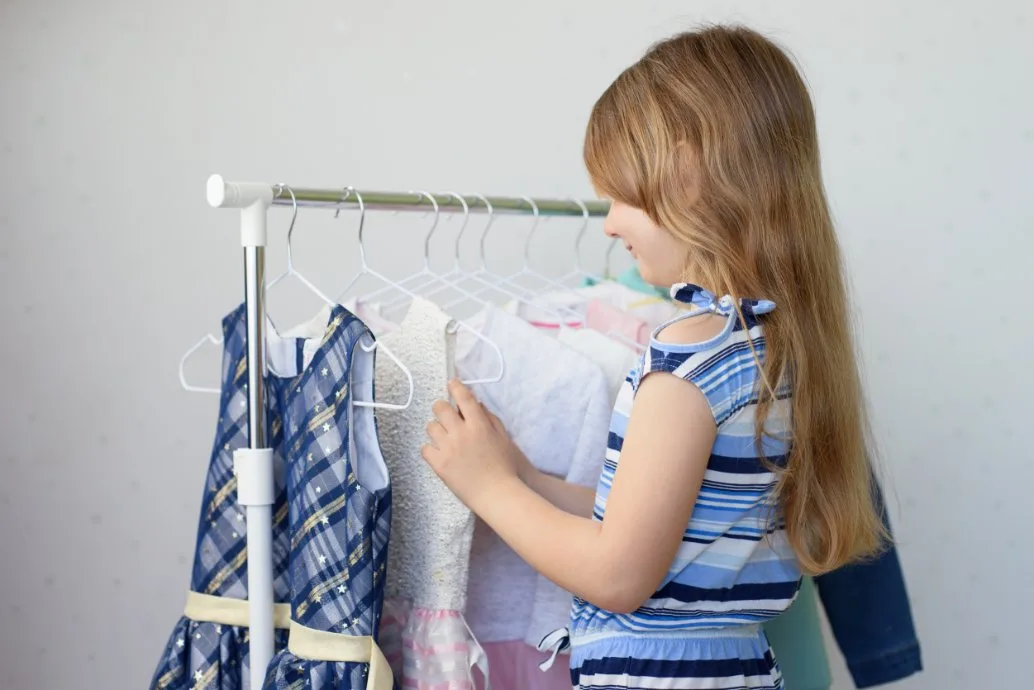
Setting Clear Boundaries and Options
Successful clothing choice implementation requires balancing freedom with practical limitations. The key is providing structured choices rather than unlimited options.
Age-Appropriate Implementation Strategies:
For Toddlers (18 months – 3 years):
- Lay out two complete, weather-appropriate outfits
- Use simple language: “Blue shirt or red shirt?”
- Allow extra time for the choosing and dressing process
- Celebrate their choice enthusiastically and positively
- Keep backup options readily available for changes of mind
For Preschoolers (3-5 years):
- Organize clothes in accessible, low drawers or hooks
- Create seasonal clothing sections
- Teach basic weather-clothing connections through discussion
- Introduce concepts of “matching” and “appropriate for the activity”
- Allow natural consequences for minor clothing mistakes
Teaching Weather-Appropriate Dressing
Help children learn to consider weather when making clothing choices:
| Weather Condition | Recommended Clothing | Teaching Points | Safety Considerations |
|---|---|---|---|
| ☀️ Sunny/Hot (75°F+) | Shorts, t-shirts, sandals, sun hat | Light colors reflect heat, breathable fabrics keep cool | Sun protection, adequate coverage for UV exposure |
| 🌧️ Rainy | Raincoat, waterproof boots, long pants | Water-resistant materials keep body dry and warm | Visibility in low light, non-slip footwear |
| ❄️ Cold (Below 50°F) | Jacket, hat, mittens, warm layers | Multiple layers trap warm air, cover extremities | Hypothermia prevention, frostbite protection |
| 🌤️ Mild (50-75°F) | Light layers, comfortable shoes, optional jacket | Layers can be added or removed as temperature changes | Easy adjustment for indoor/outdoor transitions |
Creating an Organizational System
Set up your child’s clothing area to support independence:
Essential Organization Elements:
- Low dresser or hooks at child’s eye level and reach
- Designated spot for laying out tomorrow’s clothes
- Weather chart or window view for daily reference
- Easy-to-use organizational systems with clear categories
- Visual reminders for special events or dress codes
- Mirror at child height for self-assessment
- Comfortable seating area for putting on shoes and socks
Balancing Independence with Parental Guidance
Know when to step in while still supporting autonomy:
When to Offer Guidance:
- Safety concerns (inappropriate footwear for activities)
- Weather extremes that could cause discomfort or harm
- Special occasions requiring specific dress codes
- School or daycare requirements
- Social situations where appropriateness matters
How to Guide Without Taking Over:
- Offer two or three appropriate alternatives instead of saying “no”
- Explain the reasoning: “Those sandals might make your feet cold outside”
- Ask guiding questions: “What do you think we need for rainy weather?”
- Use positive redirection: “That’s a great summer choice! For today, let’s pick something warmer”
- Allow minor mistakes that won’t cause harm as learning opportunities
Time Management and Morning Routines
Successful clothing choices require adequate time and preparation:
Morning Routine Strategies:
- Choose clothes the night before when possible
- Build extra time into morning schedules
- Keep “emergency backup outfits” ready for difficult days
- Use visual schedules and timers to support independence
- Have weather-appropriate alternatives easily accessible
- Prepare special occasion clothing in advance
Common Challenges and Evidence-Based Solutions
Dealing with Mismatched Outfits
Many parents struggle with their child’s creative clothing combinations. Research shows that allowing self-expression through clothing, even when it results in unusual combinations, supports creativity and confidence development.
Reframe Your Perspective: Instead of viewing clashing patterns as problematic, consider them evidence of your child’s developing artistic sense and confidence in self-expression.
Strategies for Managing Mismatched Choices:
- Focus on weather appropriateness rather than fashion coordination
- Offer gentle suggestions: “I love how creative you are! What if we tried this instead?”
- Save interventions for truly important occasions
- Take photos to document their unique style choices
- Remember that fashion “rules” are arbitrary and cultural
Handling Power Struggles and Meltdowns
When clothing decisions lead to conflict, consider these evidence-based approaches:
De-escalation Strategies:
- Stay calm and regulated – children mirror adult emotional states
- Validate their feelings: “You really wanted to wear that dress today”
- Offer choices within boundaries: “You can wear the dress inside, but we need warm clothes outside”
- Use problem-solving language: “How can we solve this together?”
- Address underlying needs: hunger, tiredness, or sensory overwhelm
Is It Normal for Toddlers to Wear the Same Clothes Every Day?
Absolutely. This common behavior typically indicates that your child has found clothing that feels comfortable, familiar, and safe. This preference represents healthy self-advocacy and sensory awareness rather than defiance.
“When children insist on wearing the same clothing repeatedly, they’re often demonstrating excellent self-awareness about their sensory needs and comfort preferences.”
— Pediatric Occupational Therapy ResearchSupporting Children Who Prefer Consistent Clothing:
- Purchase multiple identical items when possible
- Gradually introduce similar alternatives
- Respect their sensory needs and preferences
- Focus on hygiene rather than variety
- Consider if the preference indicates sensory processing needs
Managing Seasonal Transitions
Clothing transitions can be particularly challenging for children who prefer routine and predictability:
- Prepare gradually: Introduce seasonal items weeks before they’re needed
- Use visual supports: Weather charts and seasonal clothing pictures
- Maintain some consistency: Keep favorite items available in appropriate versions
- Create positive associations: Special activities or stories about seasonal clothing
- Allow adjustment time: Expect resistance and plan accordingly
What Age Is Potty Training?
Most children begin potty training between 20 months and 4 years, with many starting around age 2-2.5. During this phase, clothing choices become particularly important for supporting independence and reducing accidents.
Clothing Considerations During Potty Training:
- Choose elastic waistbands over buttons or zippers
- Avoid complex clothing with multiple layers
- Select easily washable materials
- Keep extra clothes readily available
- Consider training pants that children can manage independently
- Prioritize practical training clothing over fashion during this phase
Expert Recommendations and Latest Research
“It is important to help foster growing independence by setting clear guidelines and routines. When children can master small problems and choices, they feel proud. When a child feels proud, it builds their self-esteem, their self-expression, and their confidence.”
— American Academy of PediatricsOccupational Therapy Perspective on Dressing Skills
Occupational therapists emphasize that dressing is a complex activity of daily living that requires integration of multiple skill areas. Research from occupational therapy studies shows that achieving independence in dressing may take up to 4 years, with children gradually taking on more responsibility as their skills develop.
Skills Developed Through Independent Dressing:
- Executive function abilities: Planning, sequencing, and problem-solving
- Motor planning skills: Coordinating complex movement sequences
- Self-confidence: Mastery of important life skills
- Body awareness: Understanding spatial relationships and movement
- Bilateral coordination: Using both sides of the body together effectively
Child Development Research Findings
Recent research highlights the connection between clothing choices and broader developmental outcomes:
Study Finding: Research published in Social Psychological and Personality Science found that clothing choices can influence cognitive abilities. When children feel confident in their clothing choices, they engage in more abstract thinking and creative problem-solving.
Cultural and Socioeconomic Considerations
Clothing choices exist within broader family and cultural contexts that influence both opportunities and limitations:
Factors That Influence Clothing Choices:
- Economic constraints: Budget limitations affecting available options
- Cultural expectations: Traditional dress requirements or modesty considerations
- School policies: Uniform requirements or dress code restrictions
- Family values: Priorities around sustainability, brand preferences, or practicality
- Geographic factors: Climate requirements and local customs
- Access to resources: Availability of affordable children’s clothing and shopping options
Supporting Diverse Family Needs
Effective clothing choice strategies must account for family circumstances:
- Budget-conscious families: Focus on versatile basics and seasonal rotation
- Cultural considerations: Incorporate traditional elements within choice frameworks
- Uniform requirements: Allow choices in accessories, shoes, or weekend clothing
- Limited wardrobe families: Emphasize care of clothing and creative mixing
- Hand-me-down situations: Make secondhand clothes feel special and personal
What Age Should a Child Wash Their Own Clothes?
Children can begin participating in clothing care around age 4-5 with simple tasks like sorting colors and learning about different fabric care requirements. Full independence in laundry typically develops around age 10-12, depending on maturity level and access to equipment.
Progressive Clothing Care Skills:
- Ages 3-4: Putting dirty clothes in hamper, learning to fold simple items
- Ages 4-6: Sorting clothes by color, understanding clean vs. dirty
- Ages 6-8: Loading washing machine with supervision, folding and putting away clothes
- Ages 8-10: Understanding washing instructions, treating stains
- Ages 10+: Independent washing, drying, and clothing maintenance
Long-Term Impact on Parent-Child Relationships
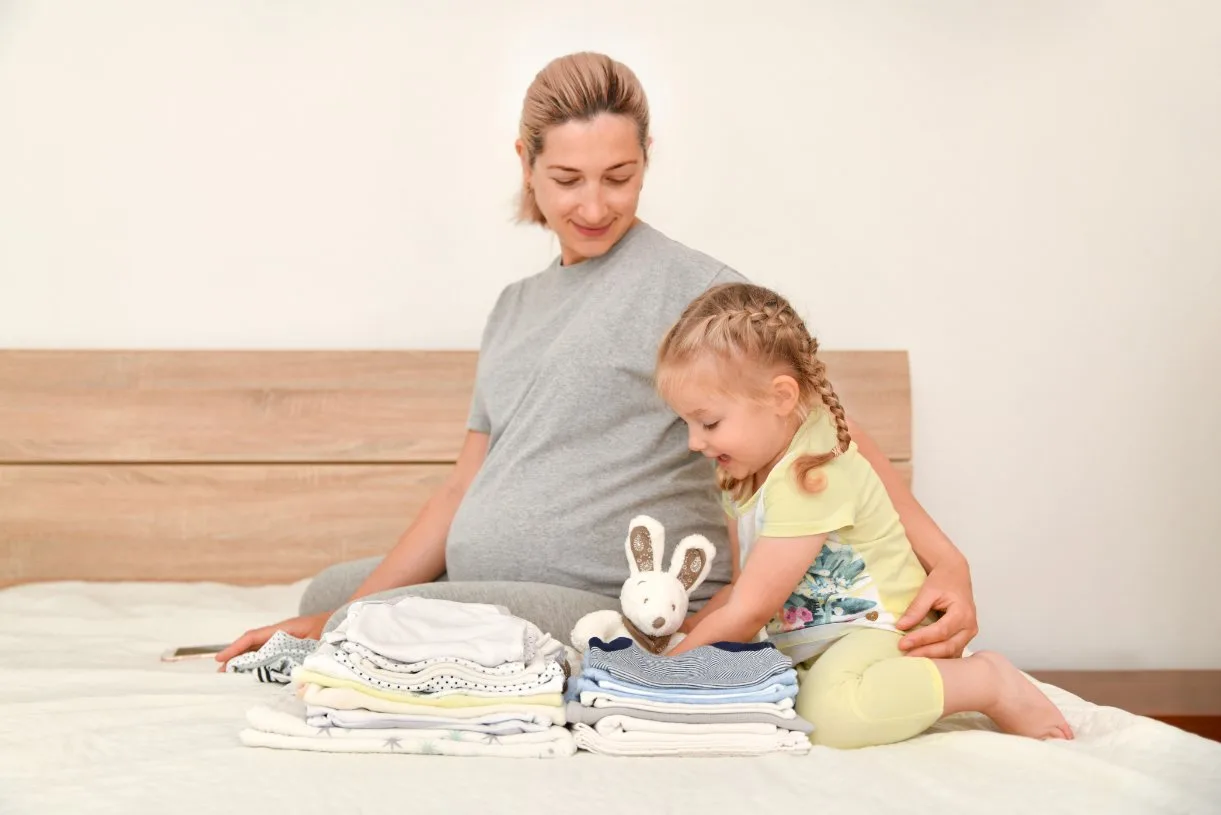
Building Trust and Communication
When parents respect their child’s clothing choices within appropriate boundaries, they demonstrate trust in their child’s developing judgment. This trust creates a foundation for open communication that extends far beyond clothing decisions.
How Clothing Choices Strengthen Relationships:
- Validates autonomy: Shows respect for the child’s developing independence
- Builds communication skills: Creates opportunities for discussion and negotiation
- Establishes trust: Demonstrates faith in the child’s decision-making abilities
- Reduces power struggles: Gives children appropriate control over their lives
- Supports identity development: Allows authentic self-expression
Teaching Values Through Clothing Decisions
Daily clothing choices provide natural opportunities to discuss important values and life skills:
- Responsibility: Caring for chosen items and understanding consequences
- Consideration: Thinking about appropriateness for different situations
- Resource management: Understanding clothing as valuable resources
- Self-awareness: Recognizing personal preferences and needs
- Problem-solving: Finding solutions when preferred items aren’t available
Preparing for Future Independence
Children who practice making clothing decisions develop skills that transfer to larger life decisions:
Long-term Benefits: Research indicates that children who have early practice with age-appropriate decision-making show better judgment, higher self-confidence, and more effective problem-solving skills as teenagers and adults.
Frequently Asked Questions
Most children begin showing clothing preferences around 18-24 months and can make simple choices by age 2-3. Full independence typically develops between ages 4-5, though this varies based on individual development, family approaches, and cultural factors. The key is starting with simple either/or choices and gradually increasing complexity as children develop.
Always prioritize safety and weather appropriateness while maintaining choice opportunities. Instead of saying “no,” offer two or three suitable alternatives and explain the reasoning. For example: “That sundress is beautiful! For today’s cold weather, would you like the blue sweater or the red one?” This maintains autonomy while ensuring practical needs are met.
Children can begin helping with clothing care around age 4-5 by sorting clothes by color and learning about caring for different fabrics. They can participate in folding and putting away clean clothes by age 5-6. Independent washing typically begins around age 10-12, depending on maturity level and access to appropriate equipment.
Yes, this is completely normal developmental behavior. Children may undress due to sensory sensitivities, temperature regulation needs, attention-seeking, exploring independence, or simple comfort preferences. Address underlying causes (like uncomfortable seams or textures), provide appropriate boundaries, and consider whether clothing choices might better meet their sensory needs.
Most children can put on socks independently by age 4-5, though this requires significant fine motor development and coordination. Some children master this skill earlier or later depending on their individual development and practice opportunities. For children with sensory sensitivities, sock tolerance may develop differently and require special consideration of seamless or specific texture options.
During potty training (typically ages 2-4), choose easy-on, easy-off clothing with elastic waistbands rather than complex fasteners. This reduces frustration and supports independence in both dressing and toileting skills. Keep extra clothes easily accessible and focus on practical training pants rather than fashion during this developmental phase.
Frequent undressing can indicate sensory sensitivities (clothing feels uncomfortable), temperature regulation issues, attention-seeking behavior, normal independence assertion, or medical issues like skin conditions. Observe patterns around when undressing occurs and consider whether current clothing meets your child’s sensory and comfort needs. Consult your pediatrician if this behavior is persistent or concerning.
Absolutely normal! This behavior typically indicates your child has found clothing that feels comfortable, familiar, and secure. Rather than forcing variety, consider purchasing multiple identical items or gradually introducing similar alternatives. This preference demonstrates healthy self-awareness and sensory regulation rather than defiance.
Clothing obsessions often reflect important developmental needs: sensory regulation (specific textures provide needed input), predictability and comfort, identity development through favorite characters or colors, desire for control and autonomy, or routine dependence. These obsessions are typically healthy expressions of developing preferences and should be supported when possible.
Conclusion
Allowing toddlers to choose their own clothes represents far more than a daily routine decision. This practice creates powerful opportunities for developing independence, confidence, motor skills, cognitive abilities, and self-expression that benefit children throughout their lives.
Essential Principles for Success:
- Start developmentally appropriate: Begin with simple either/or choices around age 2
- Respect individual differences: Accommodate sensory needs and personality traits
- Maintain necessary boundaries: Prioritize safety and weather appropriateness
- Be patient with the process: Allow time for learning and mistakes
- Celebrate progress: Acknowledge growth and increasing independence
- Stay flexible: Adapt approaches based on your child’s changing needs
Long-Term Developmental Benefits
The skills developed through clothing choices create foundations for:
- Academic success: Decision-making, problem-solving, and executive function skills
- Social confidence: Self-expression abilities and comfort with personal identity
- Life skills mastery: Independence in self-care and personal responsibility
- Emotional regulation: Sense of control and autonomy in daily routines
- Relationship building: Trust, communication, and respect between parent and child
When to Seek Professional Support
Consider consulting with pediatric occupational therapists, child development specialists, or your pediatrician if:
- Clothing sensitivities significantly impact daily functioning or school participation
- Your child shows extreme distress with most available clothing options
- Dressing delays seem disproportionate to expected developmental milestones
- Sensory issues interfere with social activities or family functioning
- You need specialized strategies for children with developmental differences
Practical Implementation Action Plan
Getting Started This Week:
- Assess your child’s current developmental stage and readiness
- Organize accessible clothing storage at your child’s level
- Start with simple either/or decisions during non-rushed times
- Establish consistent morning routines with adequate time
- Prepare weather-appropriate options for easy selection
- Focus on progress and learning rather than perfect outcomes
Supporting Your Child’s Individual Journey
Remember that every child develops at their own pace and has unique needs and preferences. Some children eagerly embrace clothing choices at 18 months, while others may not show interest until age 3 or 4. Both developmental paths are completely normal and should be respected.
Consider your child’s essential clothing items as tools for learning and development rather than simply functional necessities. Each choice they make provides practice for more complex decisions they’ll face as they grow. By supporting their autonomy in this daily activity, parents help children develop confidence and decision-making skills that will benefit them in school, relationships, and future challenges.
“A child that dresses themselves is not only a confident child, but also decreases the stress on the caregivers in the household.”
— Foundation Speech TherapyBuilding on This Foundation
As children master basic clothing choices, parents can gradually introduce more complex concepts:
- Care and responsibility: Teaching proper clothing care and maintenance
- Social awareness: Understanding dress codes and situational appropriateness
- Resource management: Learning about clothing as valuable resources requiring care
- Style development: Exploring personal preferences and creative expression
- Cultural appreciation: Understanding clothing traditions and meanings
Final Thoughts
Clothing choices represent daily opportunities to support your child’s growing independence while building trust and communication in your relationship. While there may be challenges along the way—from mismatched outfits to occasional morning meltdowns—the long-term benefits of supporting your child’s autonomy in this area are substantial and lasting.
Whether your child has typical development or special needs, whether they’re naturally fashion-forward or comfort-focused, the fundamental principles remain consistent: offer appropriate choices, respect their preferences when safely possible, maintain necessary boundaries, and celebrate their growing independence and confidence.
By viewing each clothing decision as an investment in your child’s development, parents transform routine dressing into powerful learning opportunities that support growth, independence, and the strong parent-child relationships that form the foundation for lifelong success and happiness.
For additional guidance on choosing safe, appropriate clothing for your child, explore resources on fabric selection, proper sizing, and seasonal considerations. Remember that this journey is about much more than getting dressed—it’s about raising confident, capable, and independent individuals.

